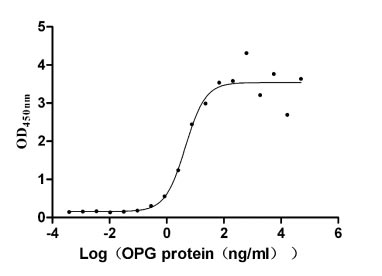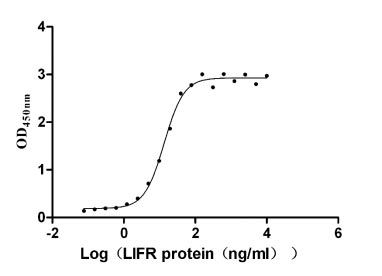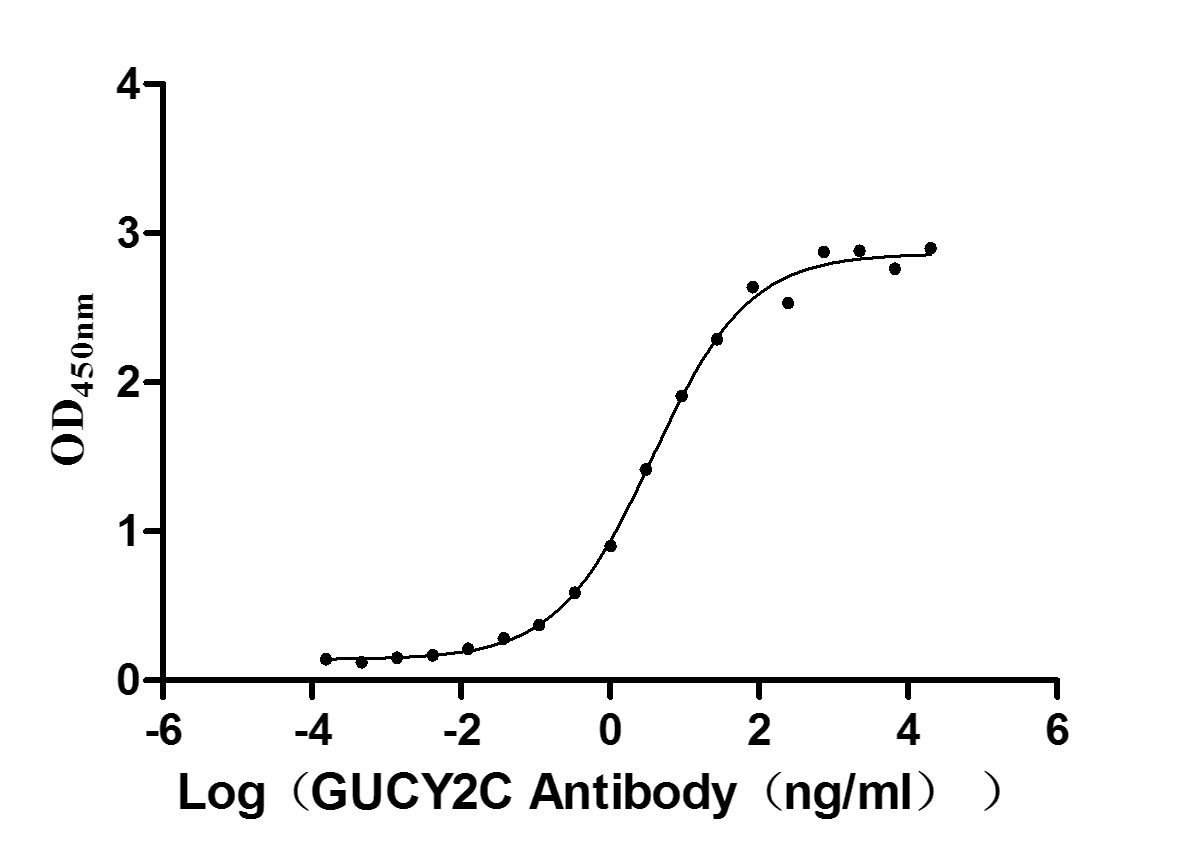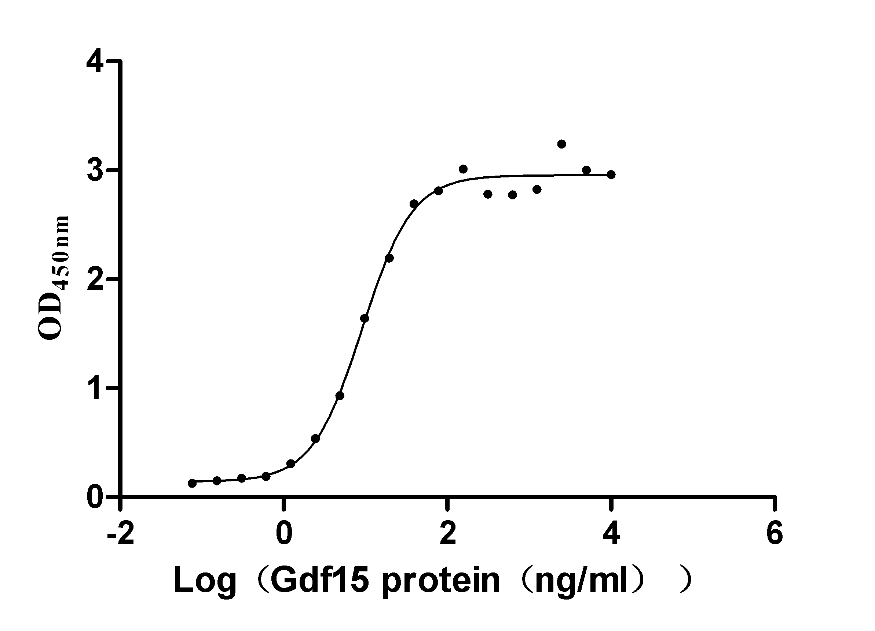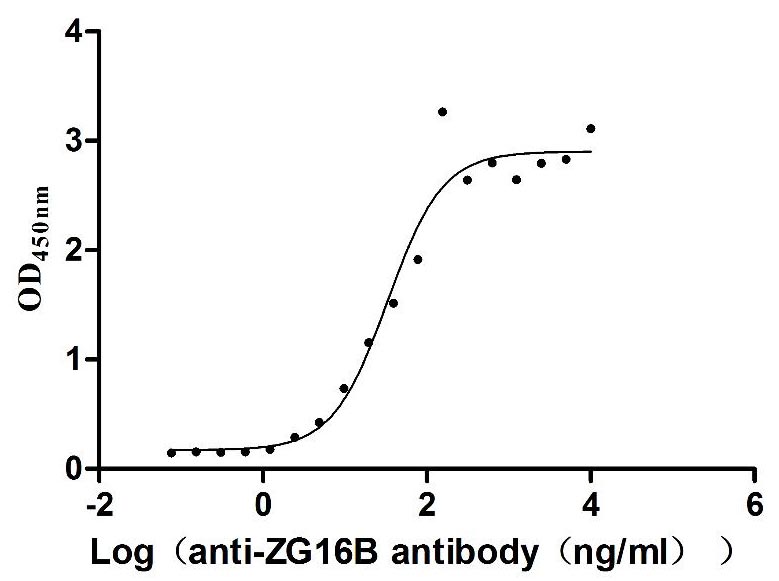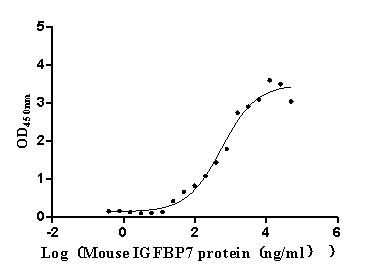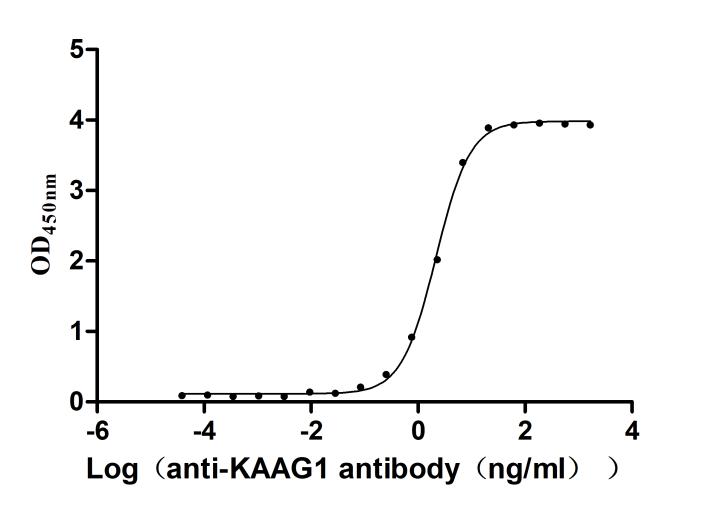Recombinant Human Carbohydrate sulfotransferase 2 (CHST2), partial
-
中文名稱:Recombinant Human Carbohydrate sulfotransferase 2(CHST2),partial
-
貨號:CSB-YP897281HU
-
說明書:
-
規(guī)格:
-
來源:Yeast
-
其他:
-
中文名稱:Recombinant Human Carbohydrate sulfotransferase 2(CHST2),partial
-
貨號:CSB-EP897281HU
-
說明書:
-
規(guī)格:
-
來源:E.coli
-
其他:
-
中文名稱:Recombinant Human Carbohydrate sulfotransferase 2(CHST2),partial
-
貨號:CSB-EP897281HU-B
-
說明書:
-
規(guī)格:
-
來源:E.coli
-
共軛:Avi-tag Biotinylated
E. coli biotin ligase (BirA) is highly specific in covalently attaching biotin to the 15 amino acid AviTag peptide. This recombinant protein was biotinylated in vivo by AviTag-BirA technology, which method is BriA catalyzes amide linkage between the biotin and the specific lysine of the AviTag.
-
其他:
-
中文名稱:Recombinant Human Carbohydrate sulfotransferase 2(CHST2),partial
-
貨號:CSB-BP897281HU
-
說明書:
-
規(guī)格:
-
來源:Baculovirus
-
其他:
產(chǎn)品詳情
-
純度:>85% (SDS-PAGE)
-
基因名:CHST2
-
Uniprot No.:
-
別名:CHST2; GN6STCarbohydrate sulfotransferase 2; EC 2.8.2.-; Galactose/N-acetylglucosamine/N-acetylglucosamine 6-O-sulfotransferase 2; GST-2; N-acetylglucosamine 6-O-sulfotransferase 1; GlcNAc6ST-1; Gn6ST-1
-
種屬:Homo sapiens (Human)
-
蛋白長度:Partial
-
蛋白標(biāo)簽:Tag?type?will?be?determined?during?the?manufacturing?process.
The tag type will be determined during production process. If you have specified tag type, please tell us and we will develop the specified tag preferentially. -
產(chǎn)品提供形式:Lyophilized powder Warning: in_array() expects parameter 2 to be array, null given in /www/web/cusabio_cn/public_html/caches/caches_template/default/content/show_product_protein.php on line 662
Note: We will preferentially ship the format that we have in stock, however, if you have any special requirement for the format, please remark your requirement when placing the order, we will prepare according to your demand. -
復(fù)溶:We recommend that this vial be briefly centrifuged prior to opening to bring the contents to the bottom. Please reconstitute protein in deionized sterile water to a concentration of 0.1-1.0 mg/mL.We recommend to add 5-50% of glycerol (final concentration) and aliquot for long-term storage at -20℃/-80℃. Our default final concentration of glycerol is 50%. Customers could use it as reference.
-
儲存條件:Store at -20°C/-80°C upon receipt, aliquoting is necessary for mutiple use. Avoid repeated freeze-thaw cycles.
-
保質(zhì)期:The shelf life is related to many factors, storage state, buffer ingredients, storage temperature and the stability of the protein itself.
Generally, the shelf life of liquid form is 6 months at -20°C/-80°C. The shelf life of lyophilized form is 12 months at -20°C/-80°C. -
貨期:Delivery time may differ from different purchasing way or location, please kindly consult your local distributors for specific delivery time.Note: All of our proteins are default shipped with normal blue ice packs, if you request to ship with dry ice, please communicate with us in advance and extra fees will be charged.
-
注意事項(xiàng):Repeated freezing and thawing is not recommended. Store working aliquots at 4°C for up to one week.
-
Datasheet :Please contact us to get it.
相關(guān)產(chǎn)品
靶點(diǎn)詳情
-
功能:Sulfotransferase that utilizes 3'-phospho-5'-adenylyl sulfate (PAPS) as sulfonate donor to catalyze the transfer of sulfate to position 6 of non-reducing N-acetylglucosamine (GlcNAc) residues within keratan-like structures on N-linked glycans and within mucin-associated glycans that can ultimately serve as SELL ligands. SELL ligands are present in high endothelial cells (HEVs) and play a central role in lymphocyte homing at sites of inflammation. Participates in biosynthesis of the SELL ligand sialyl 6-sulfo Lewis X and in lymphocyte homing to Peyer patches. Has no activity toward O-linked sugars. Its substrate specificity may be influenced by its subcellular location. Sulfates GlcNAc residues at terminal, non-reducing ends of oligosaccharide chains.
-
基因功能參考文獻(xiàn):
- GlcNAc6ST1 is up-regulated in the brains of Alzheimer's disease patients. PMID: 28320965
- A method for O-GlcNAc detection using in vitro sulfation with two N-acetylglucosamine (GlcNAc)-specific sulfotransferases, carbohydrate sulfotransferase 2 and carbohydrate sulfotransferase 4. PMID: 24799377
- report the sites at which N-Acetylglucosamine-6-sulfotransferase-1 is modified with N-linked glycans and the effects that each glycan has on enzyme activity, specificity, and localization.[N-Acetylglucosamine-6-sulfotransferase-1] PMID: 19571171
- is distributed throughout the Golgi apparatus and orchestrates the biosynthesis of L-selectin ligands PMID: 12855678
- A novel tumor antigen that is specifically expressed in ovarian mucinous, clear cell and papillary serous adenocarcinomas. PMID: 16897186
顯示更多
收起更多
-
亞細(xì)胞定位:Golgi apparatus, trans-Golgi network membrane; Single-pass type II membrane protein.
-
蛋白家族:Sulfotransferase 1 family, Gal/GlcNAc/GalNAc subfamily
-
組織特異性:Widely expressed. Highly expressed in bone marrow, peripheral blood leukocytes, spleen, brain, spinal cord, ovary and placenta. Expressed by high endothelial cells (HEVs) and leukocytes.
-
數(shù)據(jù)庫鏈接:
Most popular with customers
-
Recombinant Human Tumor necrosis factor receptor superfamily member 11B (TNFRSF11B) (Active)
Express system: Mammalian cell
Species: Homo sapiens (Human)
-
Recombinant Human Leukemia inhibitory factor receptor (LIFR), partial (Active)
Express system: Mammalian cell
Species: Homo sapiens (Human)
-
Recombinant Human Heat-stable enterotoxin receptor (GUCY2C), partial (Active)
Express system: Mammalian cell
Species: Homo sapiens (Human)
-
Recombinant Mouse GDNF family receptor alpha-like (Gfral), partial (Active)
Express system: Mammalian cell
Species: Mus musculus (Mouse)
-
Recombinant Human Pancreatic adenocarcinoma up-regulated factor (ZG16B) (Active)
Express system: Mammalian cell
Species: Homo sapiens (Human)
-
Recombinant Mouse Complement component C1q receptor (Cd93), partial (Active)
Express system: Mammalian cell
Species: Mus musculus (Mouse)
-
Recombinant Human Kidney-associated antigen 1 (KAAG1) (Active)
Express system: E.coli
Species: Homo sapiens (Human)


